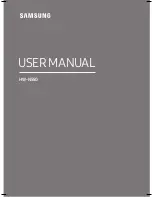
5
3) INSTRUMENTS AND CONVENTIONS FOR PER-
FORMING DIAGNOSIS AND REPAIR
3.1) INSTRUMENTS FOR BASIC DIAGNOSIS
The following are required:
-
a multimeter with the following scales:
Ohm: from 0 ohm to a few Mohm
Diode testing
Direct voltage (Vdc): from mVdc to 1000 Vdc
Alternating voltage (Vac): from 10 Vac to 700Vac
NOTE:
You are advised to use an instrument with automatic scale
since it is not theoretically possible to predict the electrical
quantity to be measured when the machine has broken
down.
-
an DC ammeter clamp at least in class .5 with e.o.s. 00A
pk.
-
alternatively to the ammeter clamp, a shunt can be used with
value 60 mV @ 150 A.
NOTES:
* Remember that other types of shunts can also be used, but accu-
racy is reduced with higher capacities, whereas with lower capa-
cities the measurement must be taken quickly to avoid overhea-
ting of the shunt
* Once fitted, the shunt is at welding potential
* The ammeter clamp is preferable as it is more practical
3.2) REPAIR TOOLS
- Complete set of fork spanners
- Complete set of pipe spanners for hexagonal nuts
- Complete set of blade screwdrivers
- Complete set of Phillips screwdrivers
- Complete set of Allen keys
- Crimper for insulated wire terminals (blue, red and yellow)
- Pliers for AMP contacts
- Tweezers and cutting nippers - type commonly used for
electronic components
- Tongs (dimensions suitable for closing gas pipe clamps)
- Welder for electronic components, minimum power 50 W
- Portable electric drill
3.3) CONVENTIONS
By convention, when a measurement has to be taken between two
points, for example a
b, the arrow point indicates where to
apply the red tip of the multimeter (a),while the black tip is applied
at the other end (b).
When a double arrow appears between two measuring points (e.g.:
c
d), the voltage to be measured is alternating (normally at
50 Hz), therefore it does not matter in which order the multimeter
terminals are applied.
In drawings and tables, when a voltage measurement appears refer-
ring to terminals of components such as DIODES, BJT, MOSFET and
IGBT, the multimeter is used in “diode test” mode (these measure-
ments are always taken with the machine switched off and normally
give values in the range +0.10 … +0.90Vdc). In this case the fol-
lowing symbol is affixed beside the value to be measured
Junction measurement (multimeter in “diode test”
mode)
The following symbols will be used in the same way:
AC or DC voltage measurement (multimeter in voltme-
ter mode).
Resistance measurement (multimeter in ohmmeter
mode).
Current measurement (ammeter clamp or shunt +
multimeter in millivoltmeter mode).
Frequency measurement (multimeter in frequencyme-
ter mode).
The measuring conditions (power source on/off, MMA/TIG opera-
ting mode, etc.) are always clearly indicated beside the values to be
measured.
The connector terminals are indicated by the name of the connector
followed by a slash and the number of the terminal; for example
CN1/ indicates terminal of connector CN1.
Unless otherwise specified, all the measurements must be perfor-
med with the boards fitted, together with their connections.
Remember that the first of the tests to be performed
is the VISUAL CHECK!
The visual check reduces troubleshooting times and directs any
subsequent tests towards the damaged part!
Содержание GENESIS 145
Страница 1: ...REPAIRS MANUAL E N G L I S H Genesis 145...
Страница 17: ...17 7 WIRING AND CONNECTION DIAGRAM...
Страница 18: ...18...
Страница 19: ......
Страница 41: ...40 11 spare part list...
Страница 44: ...43...






































